New home builders and HomeBuilder: Get a brand new home for just $168,000
Owning a new home that perfectly matches your lifestyle and avoiding skyrocketing property prices isn’t impossible. HOW TO GUIDE
Lifestyle
Don't miss out on the headlines from Lifestyle. Followed categories will be added to My News.
Owning a new home that perfectly matches your lifestyle – as well as escaping Australia’s skyrocketing property prices – is leading more of us to build than ever before.
Construction is set to start on a record 130,000 new homes around the nation this year, with the Federal Government’s HomeBuilder stimulus package and low interest rates combining to encourage increasing numbers of Australians to build.
With existing house values soaring to their highest level in almost 18 years, families such as Luke and Melissa Lilburn say building a home is a far cheaper option than buying an existing one, especially if it might require renovation.
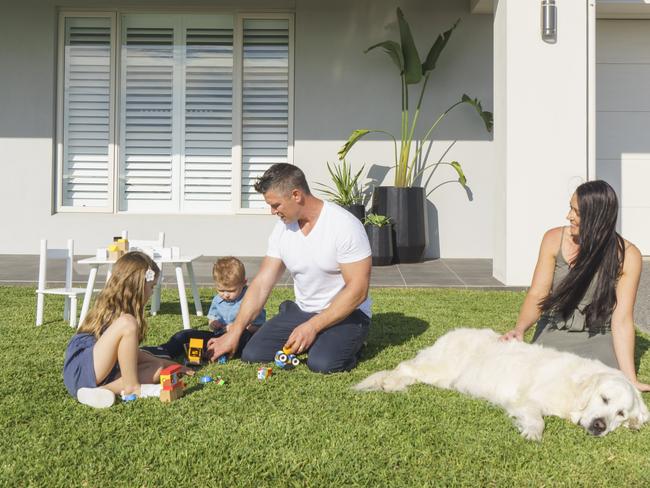
According to CoreLogic, the national median property value now sits at $598,884.
The Housing Industry Association says the initial $25,000 HomeBuilder cash grant, which dropped to $15,000 in the new year, has been a key driver of new builds. The HIA expects a late surge in building contracts, which must be signed by the end of this month.
Western Australia has so far seen the biggest uptake in new building approvals with an increase of 124 per cent, followed by Tasmania up 60.6 per cent, Queensland up 51.8 per cent, South Australia up 45.7 per cent, New South Wales up 28.4 per cent and Victoria increasing by 23.8 per cent.
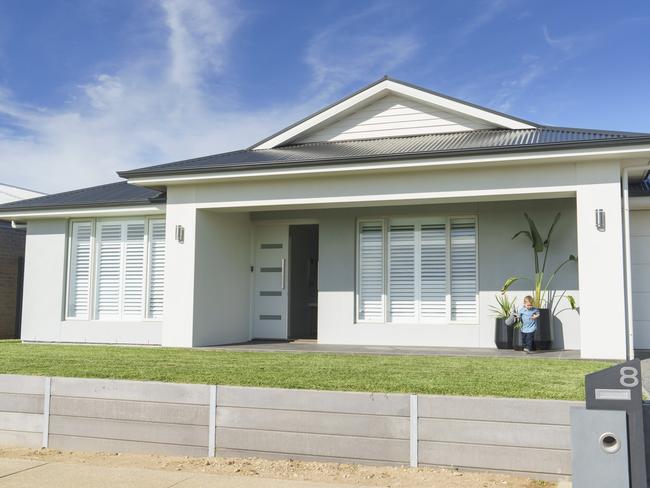
HOUSE AND LAND DEMAND BOOM
But for a building contract to go ahead, home buyers need to have land to build on. This has resulted in increased demand for house-and-land packages — and in some states people camping out to secure yet-to-be-released parcels of land or joining developers’ increasingly long waitlists for new land.
HIA chief economist Tim Reardon says land development slowed due to COVID last year and the only limit to new home builds this year will be the availability of residential land.
“HomeBuilder has delivered. All leading indicators show a record volume of detached homes about to commence construction and this is occurring in almost every location across Australia,’’ he says.
And the reasons are simple: in most cases it’s cheaper and more personal to build from scratch.
Metricon’s Richard Bryant says it is possible to build a brand new three-bedroom, two-bathroom home from just $168,000.
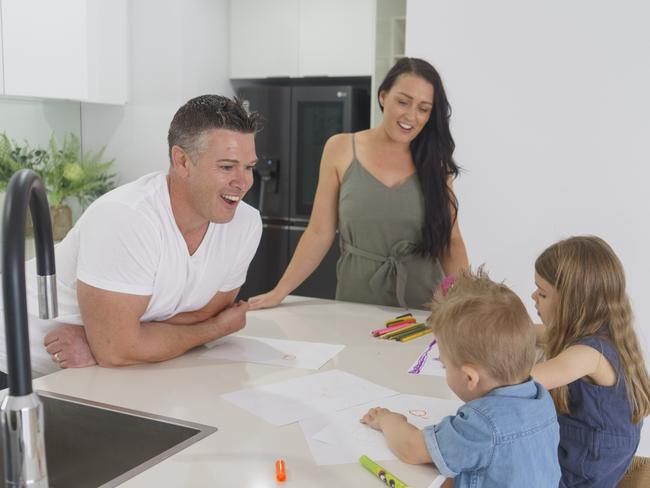
“That value looks even more appealing when you start to factor in all the current initiatives and concessions available, such as the HomeBuilder scheme, reduced stamp duty and the First Homeowner grant,’’ says Richard.
He says the personal choices that come with building a home is a significant factor swaying more people to build, as they also appreciate the savings from not having to spend on repairs, maintenance and renovation works that are part and parcel of buying an older home.
“From a design perspective, the biggest advantage and appeal for new builds is the creative control that it offers for buyers,’’ he says.
“There are many visual selections that you get to choose to suit your budget and aesthetic. For example, you decide where the master bedroom is located, what colour bricks are used, whether you have sliding or bi-fold doors or if you’d like stone-top benches.’’
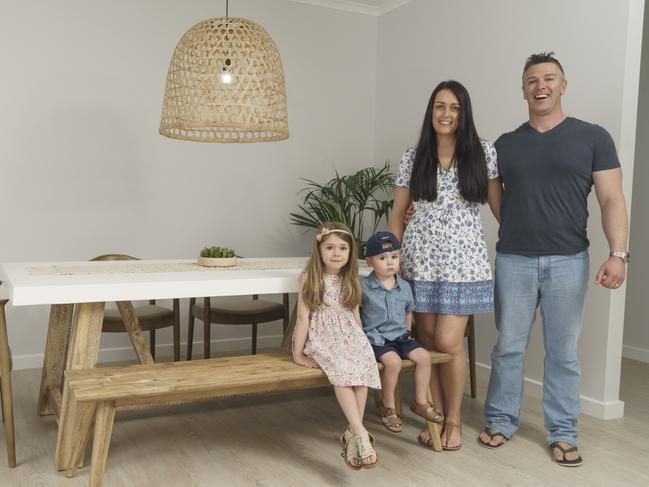
TICKING THE NEW HOME BOXES
Tired of trudging around real estate opens that left too many boxes unticked, Luke and Melissa Lilburn took the plunge and decided to build their own home.
“We spent so long looking for ‘the one’ that ticked all the boxes but nothing came close without it undergoing major renovations and ongoing maintenance,’’ says Luke, of the couple’s house hunting journey.
“Building meant we would get a product that was new and exactly what we wanted. The last thing we wanted to do was buy something that potentially had asbestos or faulty airconditioning or issues with dampness.
“We knew everything was squeaky clean.’’
After visiting the display homes of “every builder in Adelaide’’, Luke, a qualified electrician, and Melissa, a dental nurse, fell in love with Hickinbotham’s Inverness design and customised it to suit their lifestyle.
The four-bedroom design fit perfectly on the couple’s newly acquired block at beachside Moana – the only remaining coastal land subdivision within Adelaide’s city limits.
The floorplan boasts three spacious living areas, giving Luke and Melissa plenty of space for their must-haves – an at-home gym and playroom for their children, Molly, five, and Archie, two. Luke estimates it would have cost at least $20,000 more to buy an existing property of a comparable size – which likely would have also been without the luxury fittings he was able to achieve. Or they would have had to substantially renovate.
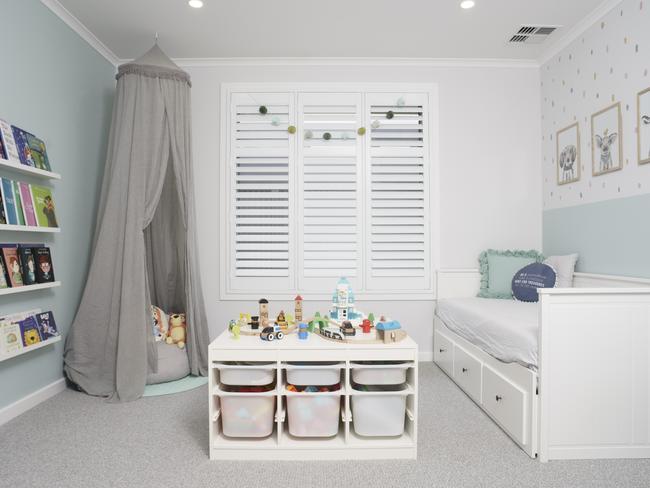
“At the time, Hickinbotham was offering $35,000 worth of incentives, like Essastone counters, a dishwasher, upgraded power points and tall (2.7m) ceilings. That was all part of the (build) price that we didn’t have to pay for. It starts to add up,” says Luke.
The family moved into their home last August, right on schedule. They have since fitted out the laundry, which was custom designed and installed by Luke, and are building an alfresco area – two items they decided to tackle after handover to save on costs. They’ve added VJ panelling to some spaces, wallpapered bedrooms and completed the landscaping in a coastal style.
They also opted to do their own solar panel installation and have made provisions to fit a gas fireplace once they find one they like.
Their new home is their forever home, but Luke and Melissa are now looking to build an investment home nearby. “With property prices so inflated at the moment, it makes more sense to build than buy,’’ Luke says. “We only wish we had (built a home) sooner
KNOW YOUR BLOCK
Even neighbouring land parcels can have varying soil types, which affect footings and other requirements. Find out what you are dealing with early on to avoid any shock price blowouts.
PLAN WISELY
Take time to consider the layout of each room and how it will be used. If you need an extra large refrigerator/freezer for your family then be sure your design has the space for it. Similarly, consider the width of hallways, doorways and through spaces for ease of access. If you are looking at incorporating a king-size bed in the master suite, make sure any power points on that wall are located either side rather than in hard-to-reach spots behind the bed.
CONSIDER FITTINGS EARLY ON
Visit builder selections showrooms as many times as you can and work out what is included as standard inclusions and what will be an extra cost. Luke and Melissa visited the showroom up to three times a month during the build process to make sure the selections they picked out were the ones they really wanted.
SOAK UP SOCIAL MEDIA
Read as many posts about home building as you can and learn from
the experiences of those who have already gone through the build journey.
THE FLOORPLAN ISN’T FINAL
If the budget is tight, or you haven’t quite found the fixtures you are looking for, choose to have work done after handover. Luke and Melissa opted to do the alfresco, driveway, main flooring and laundry installation themselves after the builders had finished. They struggled to find a fireplace they were happy with so asked the builder to make provision for a gas outlet and will install the fireplace later.
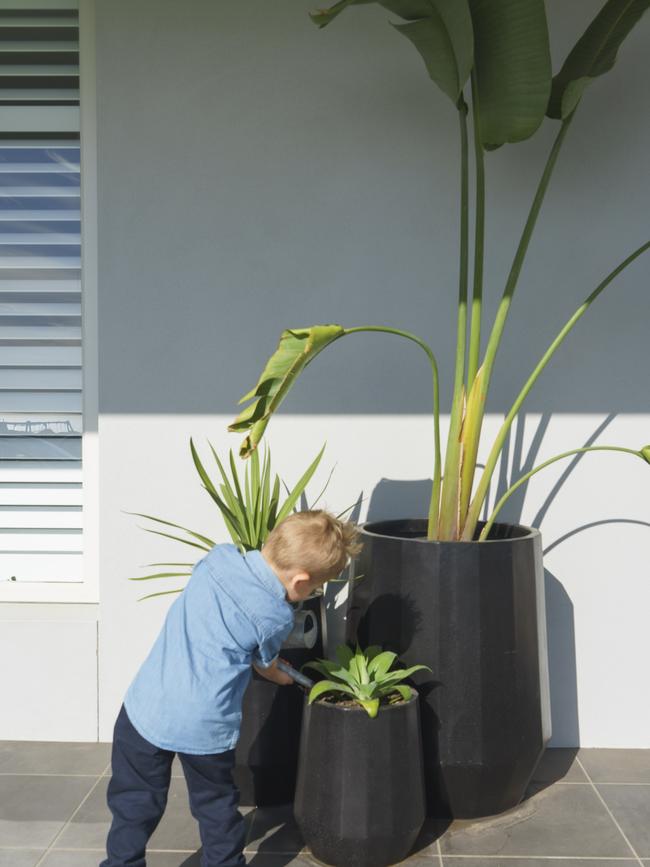
***
DO YOUR HOMEWORK
If you want to buy a house and land package, you need to do your homework. Here’s how to navigate the process.
Homes on show/land development: Go and see a range of builders’ homes, in different locations and land developments, and get a feel for the location, what you like, don’t like, can’t live without and can live without. Not only do you want a builder who will work within your price bracket, you also want someone you can trust to build a quality home, and it needs to be in an area you like.
Budget check: How much do you actually have to spend and what can you afford to repay? Make sure you finances are in check before you opt for the upgrades. Look for incentives, package deals and promotions, and see what you can lock in by signing up now. Check out the range of state and federal government incentives and see if you are eligible to take advantage of any.
Back to basics: Do your research and ask lots of questions. You should cover the building process, expected time frames, council approvals, how costs are charged, costs pertaining to site conditions, house and land packages or turn-key options, what is actually included in the tender and what costs will be charged after the job moves into construction. Always look for a builder or sales consultant who is open and upfront about what is included and ask if costs can be fixed so there are no surprises later.
Key questions to ask: 1 What is the building process, and what is included in a house and land package price? 2 What happens if the build goes over schedule? 3 Can we do some of the work ourselves (ie, painting, landscaping)? 4 What are the payment terms? 5 How many changes can we make in the design phase? 6 Who is responsible for council approvals? 7 Can we talk to your referees? 8 How will you keep me updated with the progress of my build? 9 What is the breakdown of PC (prime cost) items? 10 What are the PS (provisional sums) items and costs?
Take information with you: If you have already chosen a block of land to build on, gather as much information about the block and take it along with you when you speak to a builder or sales consultant. Bring along your allotment plan showing the width and length of your block and how much fall is on your land so the builder can determine which house design may best suit it. A copy of the land contract is worth taking as it will show any restrictions that may be on your land, such as easements.
Discuss your lifestyle: Some builders will ask you about your family and lifestyle to get an idea of how you live and what type of design may suit those who will be living in the home. If you like to entertain you may want an alfresco or if you’re a keen cook, you may want a big kitchen and a walk-in pantry.
Check the plans: Be sure to go through the plans presented to you in great detail; ask questions until they’re clear. Not everyone is expected to understand construction drawings – so make sure you’re crystal clear on the plans and specifications for your new home. Being prepared for selecting the fixtures and fittings will fill you with confidence that you’re choosing something that you’ll love to live in.
Read the contract carefully: People tend to sign first and then read later. Be familiar with the process and know exactly what it is you’ve signed up for because making changes once building has started can be costly. A post-contract variation is raised when there is an addition or deletion to the signed building contract.
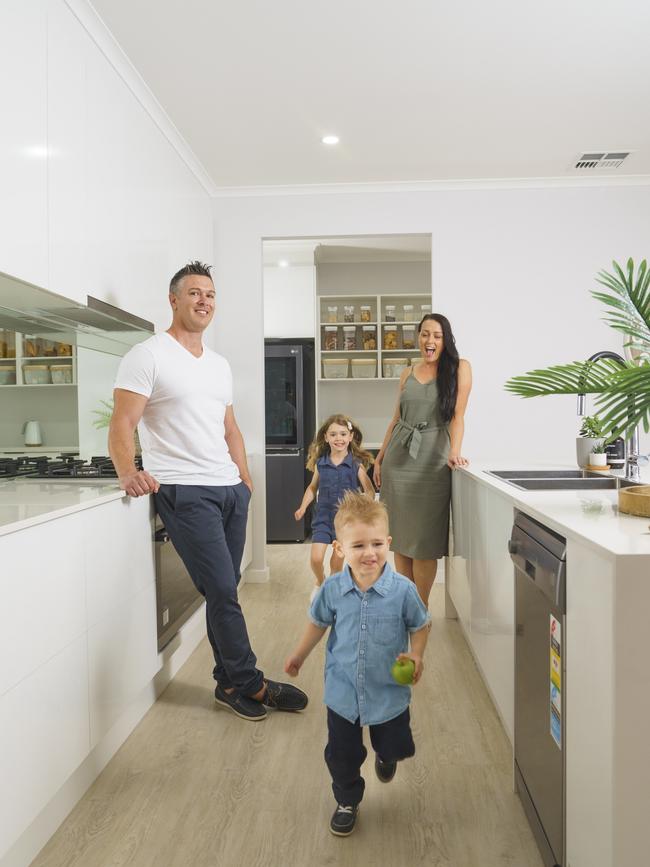
Be aware of costs: There are a number of factors that can affect the final price of a house so always ask how the builder deals with those costs. Costs fall into two main groups: prime costs (PC) and provisional sums (PS). A prime cost may include specified items such as tiles, taps, doors or bathroom fittings. Provisional sums is when an estimate is made for an unknown item, material and/or labour. Many building contracts are called “fixed price contracts”, but the final contract sum can vary due to fluctuations in PC and PS items.
Ask about site costs: Site costs cover works needed to prepare your land for building, including slab upgrades, soil removal, additional fill or even retaining walls. These costs can vary depending on your type of soil and are generally determined by a soil test or contour survey. Not all builders will fix these costs and you may receive a cost variation to the contract as a result.
Location: Depending on where you build, the location can add extra costs, particularly if you plan to build in a bushfire or flood-prone area. You may need to use bushfire-resistant materials or there may be specific requirements for windows and doors.
Approvals/red tape: The first approvals required will be three Development Act requirements: Planning consent, Building Rules consent and the final Development Approval, which allows work to commence. Depending on location and council area, you may also require other government approvals relating to Work Health & Safety, fire safety, coastal or River Murray locations, electrical, sewer, water, gas. Some council areas also require State Heritage approval. Times for approvals can vary from two weeks up to 12 months.
Percentage increase in new building approvals – state by state
(Past six months)
Western Australia (+124.1 per cent)
Tasmania (+60.6 per cent)
Queensland (+51.8 per cent)
South Australia (+45.7 per cent)
New South Wales (+28.4 per cent)
Victoria (+23.8 per cent)
In original terms, they improved in the Northern Territory (+82.0 per cent) and
the ACT (+35.9 per cent)
Source: HIA
More Coverage
Originally published as New home builders and HomeBuilder: Get a brand new home for just $168,000




